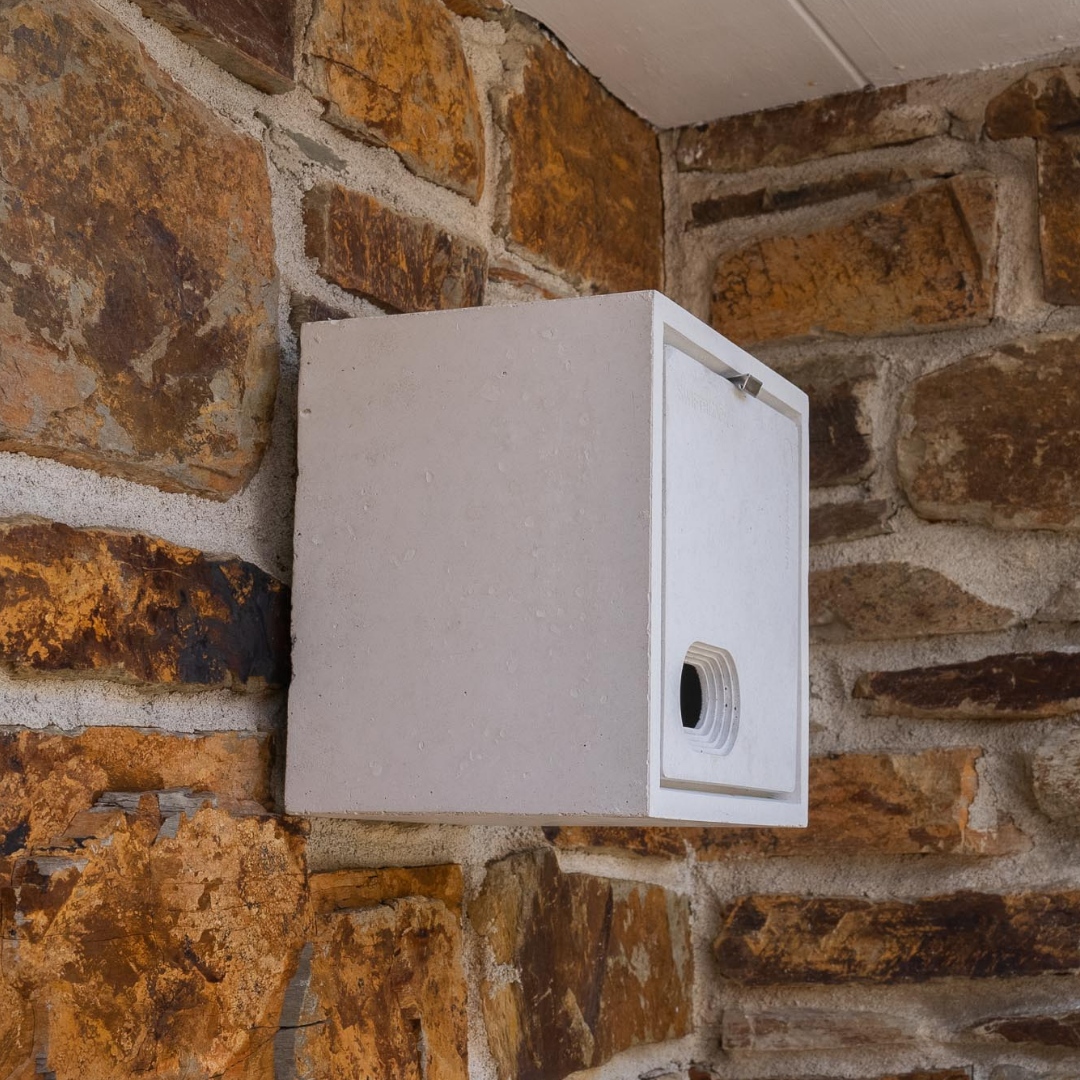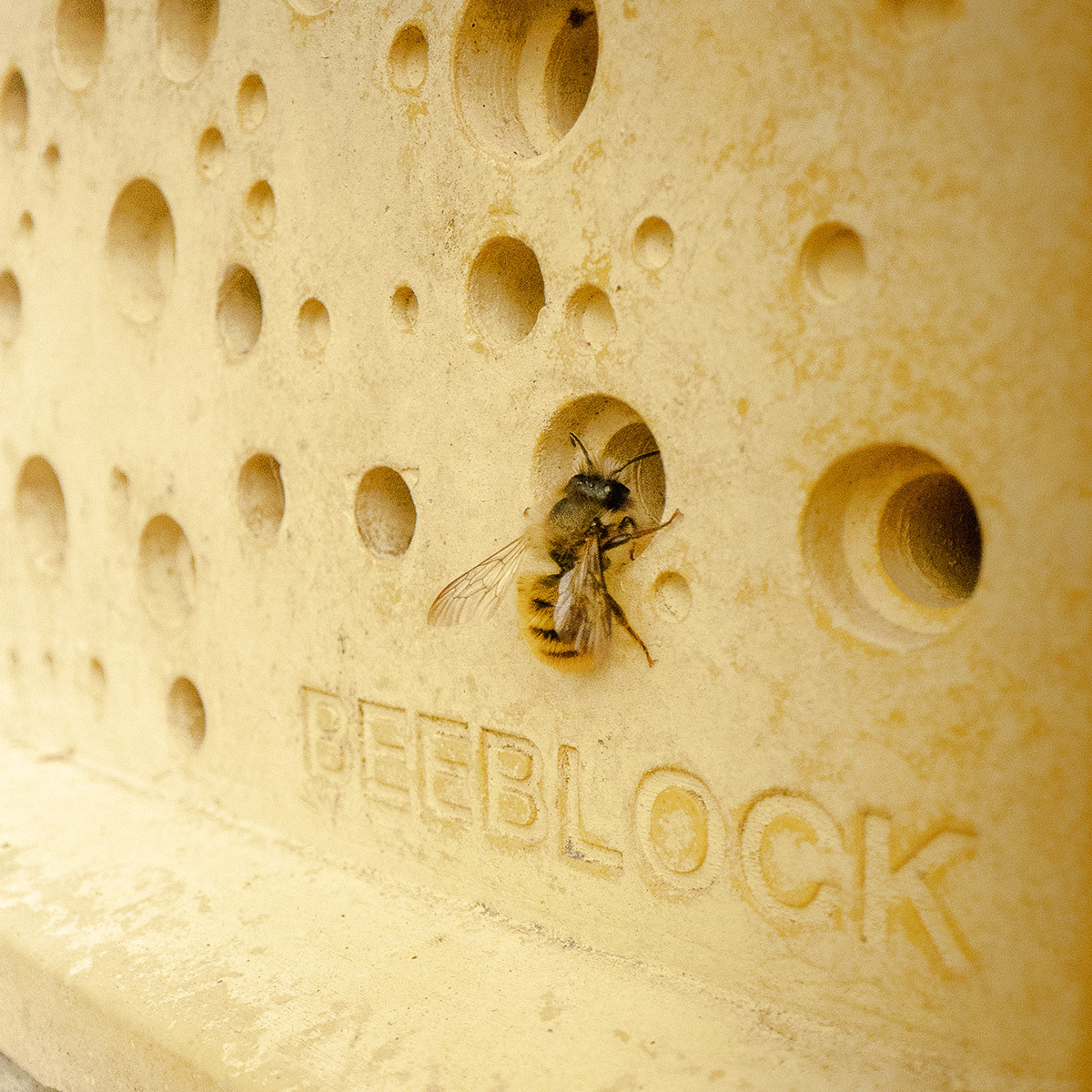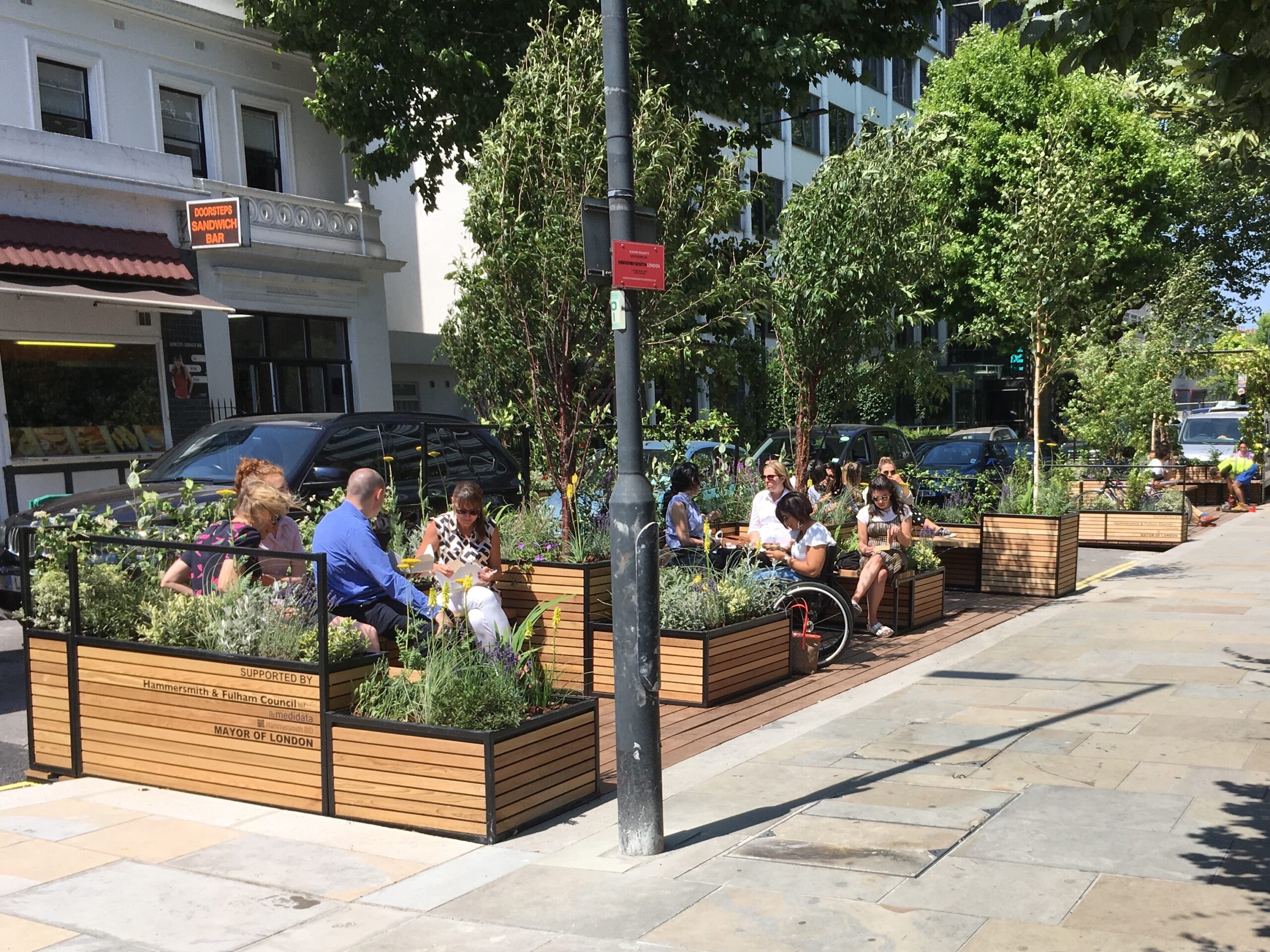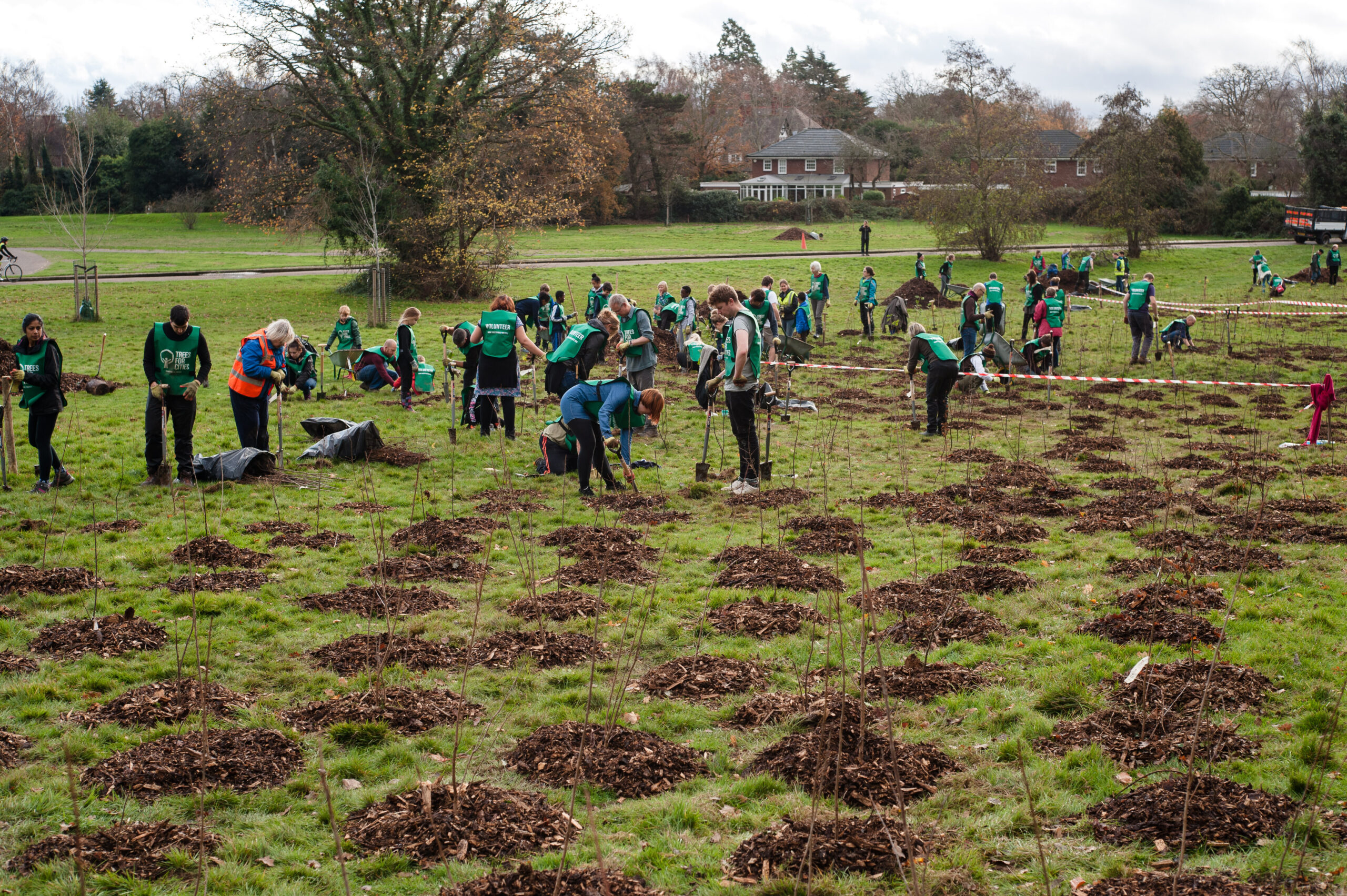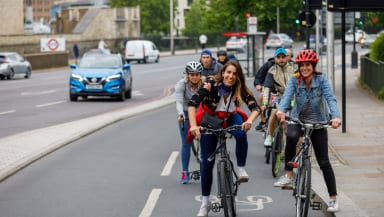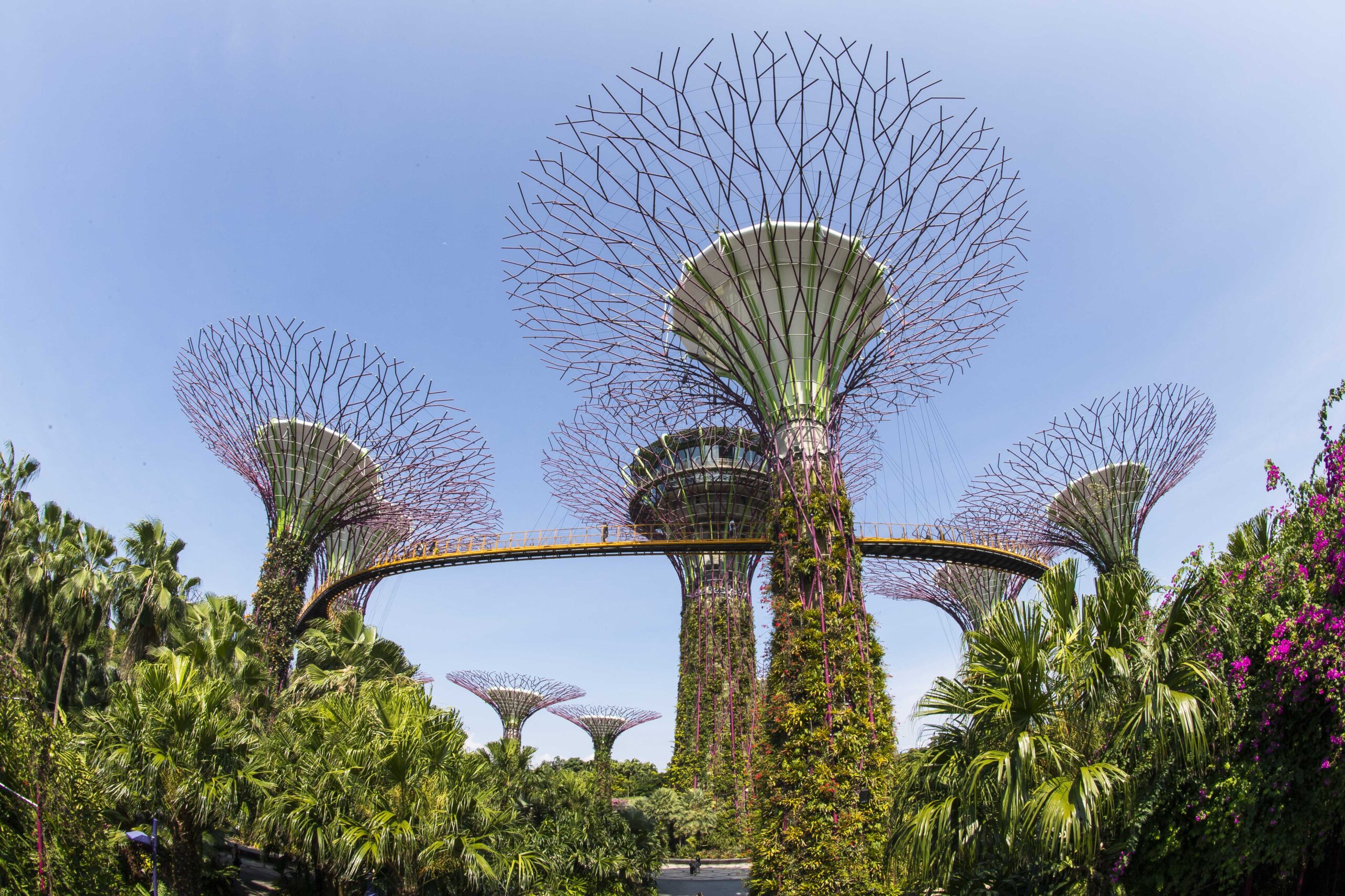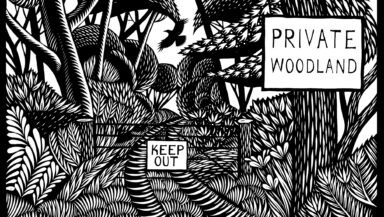The UK is one of the most urbanised countries in the world, with a staggering 84% of us living in towns and cities. Since the industrial revolution, our urban areas have expanded and sprawled. This process largely happened at the expense of the natural world, with a loss of green space and increase in pollution.
However, up and down the country, local communities are bucking historical trends and starting to re-green their towns and cities. People are working together and finding ingenious ways to restore the natural world in urban environments.
Urban greening does more than just change the looks of towns and cities – it transforms them into environments that actually benefit people and nature. Creating new green spaces combats air pollution, reduces flooding, provides new habitats for local wildlife, and brings communities together. It’s a crucial tool to fight against climate change and to improve standards of living in the UK.
Here are some of our favourite examples of urban greening.
Bee bus stops
Imagine if bus stops had living roofs covered with wildflowers and sedum plants – incredible right? Well some actually are!
These green-roofed bus stops are commonly called ‘Bee Bus Stops’ because their flowers attract pollinating insects whose numbers have sharply declined in recent years. Not only are these bus stops amazing sanctuaries for bees, they also absorb rain water to prevent flooding, reduce temperatures in the summer and capture pollution particles from the air.
You can find bee bus stops in cities across the UK, including Leicester, Brighton, Derby, Oxford and Hereford. If you don’t think your local area has any, why not contact your local councillor and suggest they start to roll them out?
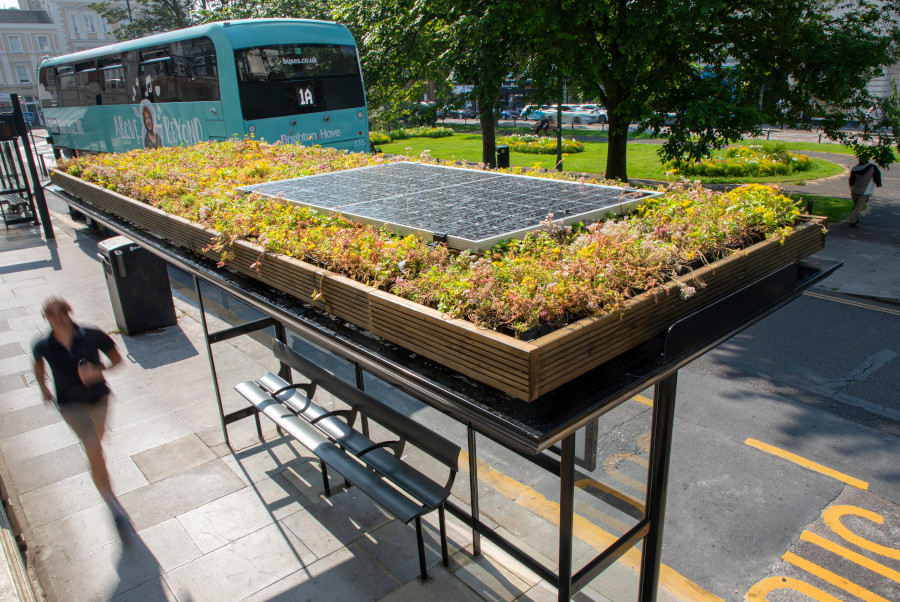
Brighton’s solar-powered “bee bus stop” has a green roof for pollinators. © Clear Channel
Wildflower meadows
Wildflowers are blooming in unexpected places across the UK, as local councils mow grass less on public land. In fact, 70% of councils have deliberately reduced mowing to boost wildflowers. This has allowed dormant seeds to flower, adding a splash of colour to city parks, roadsides and verges – and crucially allows nature to flourish.
It’s not just councils who are pioneering the wildflower revolution. Guerilla gardeners are taking matters into their own hands and planting native wildflowers in unloved corners of cities like tree pits and in the middle of roundabouts. People are also transforming their once manicured lawns into wildflower habitats. In 2020, over 30% of the public decided not to mow their lawn in May as part of the nationwide campaign ‘No Mow May’.
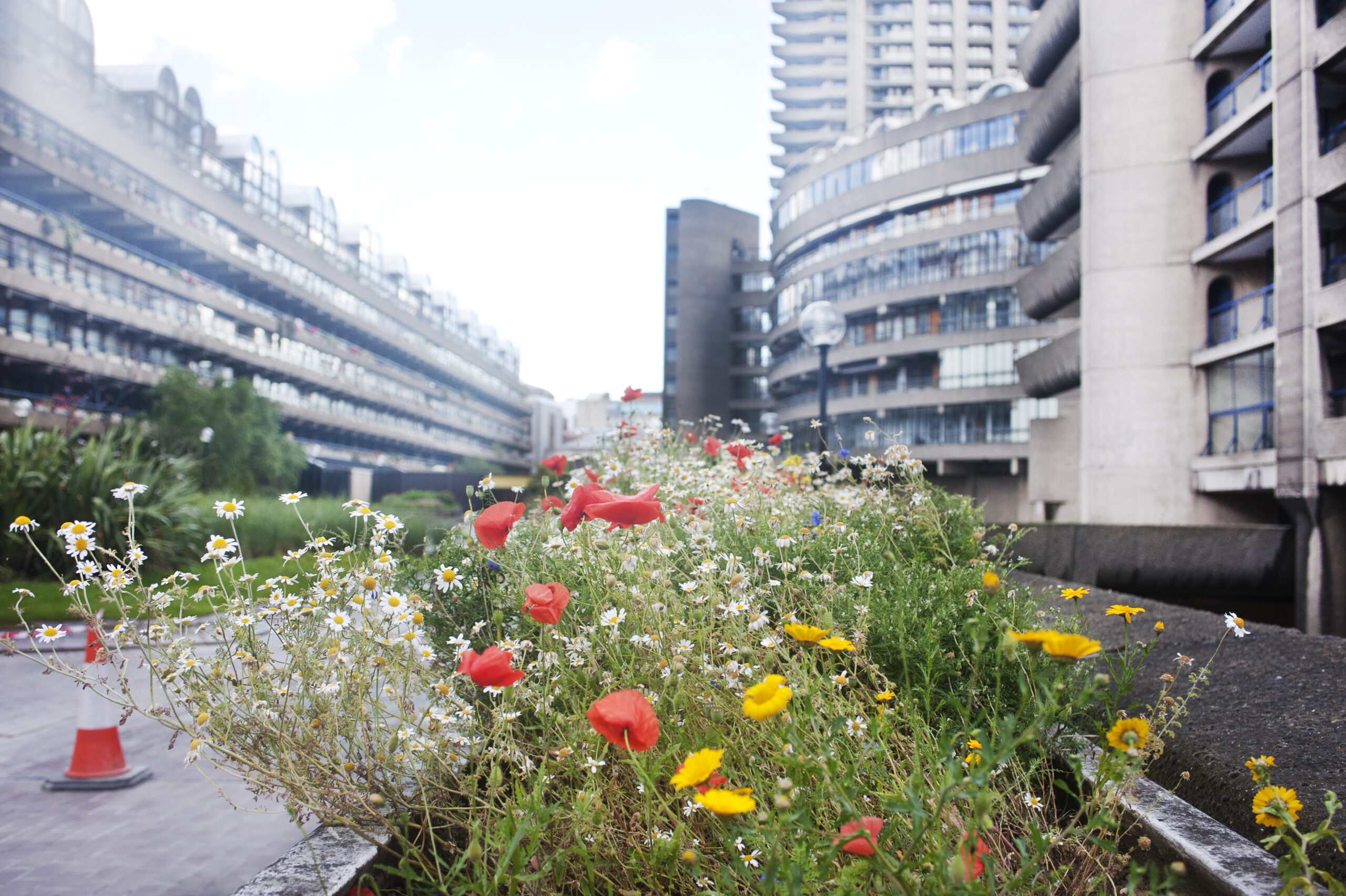
An urban ‘meadow’ in raised flower beds on the Barbican Estate in London. © Tracy Packer / Getty Images
Community gardens
Local communities are transforming neglected patches of the city into community gardens, which they manage together to produce fresh fruit and vegetables.
There are now over 1000 community gardens across the UK and they come in all different shapes and sizes. In London, people are turning small plots on housing estates into community growing projects. In Belfast, alleyways behind houses have become communal gardens. And in Bristol, boggy scrubland has transformed into a multi-purpose community garden and nature reserve.
With food poverty on the rise and 12% of British households with no access to a private or communal garden, community gardens are vital green spaces. They provide everyone the opportunity to get into gardening, boost their wellbeing and grow their own produce. Growing more local food in harmony with nature also helps create a more sustainable food system that tackles climate change. Get involved in a community garden group near you.
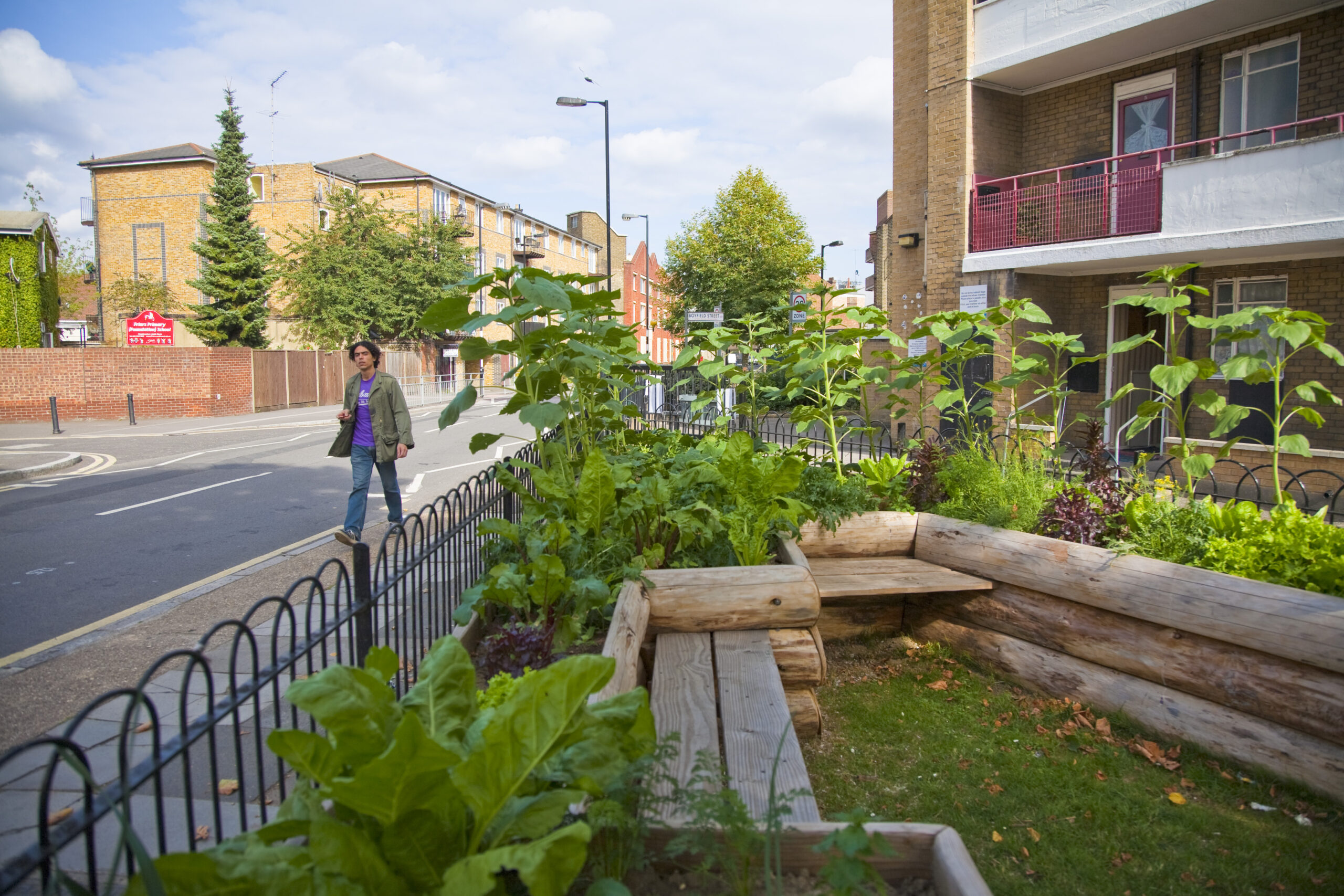
A community garden for a block of flats in central London. © Pawel Libera / Getty Images
Bee bricks and bird boxes
Bee bricks and bird boxes are two simple adaptations that give nature a home in new buildings, rather than forcing it out. Bee bricks are placed on the outside walls of buildings to provide nesting spaces for bees to lay their eggs. Bird boxes are similar in design and can come in a range of designs adapted for different species of bird.
Oxfordshire council recently built new social housing with bat and bird boxes, as well as bee bricks in outside walls. Brighton and Hove council have also recently introduced a law that requires all new buildings above 5 metres to have bird boxes and bee bricks.
If you like the sound of these nature-friendly home improvements, why not add them to your own home?

